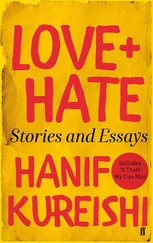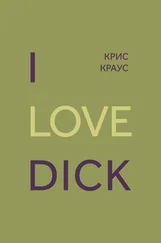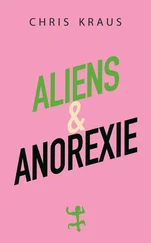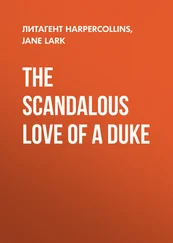Realize, D, that I am one of those Crazed Kike Witches and I understand your fear.
And why’s Janis Joplin’s life read as a downward spiral into self-destruction? Everything she did is filtered through her death. Roger Gilbert-Lecomte, Kurt Cobain, Jimi Hendrix, River Phoenix all suicided too but we see their deaths as aftermaths of lives that went too far. But let a girl choose death—Janis Joplin, Simone Weil—and death becomes her definition, the outcome of her “problems.” To be female still means being trapped within the purely psychological. No matter how dispassionate or large a vision of the world a woman formulates, whenever it includes her own experience and emotion, the telescope’s turned back on her. Because emotion’s just so terrifying the world refuses to believe that it can be pursued as discipline, as form. Dear Dick, I want to make the world more interesting than my problems. Therefore, I have to make my problems social.
The correspondence between Gustave Flaubert and Louise Colet reads like a Punch & Judy show. Louise Colet, female writer of the 19th-century, had rosy cheeks and little ringlet curls. Unlike her enemy George Sand who chose to “live like a man” until age shielded her as a grand matriarch, Louise wanted to write and she wanted to be femme. Louise turned the difficulty of combining those two occupations into a subject of her art. Flaubert thought: “You are a poet shackled to a woman! Do not imagine you can exorcise what oppresses you in life by giving vent to it in art. No! The heart’s dross does not find its way on paper.” For years they met in Paris at times and places designated by him—sex and dinner once a month whenever Flaubert needed a break from his writing schedule in Rouen. Once, Louise asked to meet his family. And here Flaubert’s biographer Francis Steegmuller steps in: “Flaubert’s depiction of Emma Bovary’s vehemence was doubtless nourished somewhat by Louise’s shrill demands.” When Flaubert finally broke her heart she wrote a poem about it and he replied: “You have made Art an outlet for the passions, a kind of chamberpot to catch the overflow of I don’t know what. It doesn’t smell good! It smells of hate!”
To be female in 19th century France was to be denied access to the apersonal. And still—
* * *
I found it hard to write about the second painting, the one paired with Walter Benjamin that everybody says deals with the Holocaust so I went back on Sunday to take another look. I drove down to New York City after spending Saturday with my old friend Suzan Cooper, a Crazed Kike Witch of the First Order. Suzan’s been exiled by her family after many years in New York to Woodstock, where she runs a gallery.
Suzan always has several hustles running. One of them is selling photos taken around Andy Warhol’s Factory by Billy Name. I bought a black & white print of John Cale, Gerard Malanga and Nico staring stoned into the distance in their Nehru jackets in a park that looks like the murder scene in Blow Up . I don’t know if Billy Name’s name at the bottom of the photo in silver magic marker was signed by Suzan or by Billy but I didn’t care.
There are two groups of three people (men) gathered in If Not, Not , the second picture. Each group is joined by one naked woman. The first group is gathered at the bottom left of the frame beside a blackish pool with floating objects. The subconscious is a dark oasis. The men are wounded soldiers. These are the objects in the pool:
—A sheep beneath a bushy olive tree
—Two blue-backed books, discarded
—A girl’s face looking straight up at the sky from underwater
—A broken pillar
—A naked man sitting up in bed from sleep
—A black crow perched on parchment writing
—A red cylindrical kitchen garbage can
The second group of men are resting in a palm-grove at top frame right. The palm trees move and bend like people’s backs. Between the resting men, a shadow or a cloud rears up from the ground like a wild rat or a pig. Have these men already visited the pool or are they looking towards it? Either way they’re exhausted, in a state (“where the river don’t bend”) that’s something like Richard Hell’s great cover of Dylan’s Going Going Gone .
The sky above these people’s streaky purple, orange, exploding nuclear Hawaiian from a tangerine funnel in the middle of the painting. But the sky on the left-side of the funnel’s very different—black-green thunderclouds drawn around a barn-like institutional building. Dachau, Auschwitz. A gaping double door: a mouth, a port of entry. We can make what we like of the differences between the two sides of this sky—are these skies evoking centuries or geography? Though everybody knows “there is nothing that can change the sky or make anything even approaching a wrinkle in its skin… no scream of terror or despair or hate or the imploring eyes of 60 million saints and innocent children ever moved it.” ( The Angel , David Rattray) The nature of a sky is to be implacable.
A duckshit-colored roadway, leading to an arch against the sky, separates these two sides of the painting. But through it, in an opening where the tangerine-slashed sky ought to continue, we see the painting’s single act of superimposition. A blue tree on the roadway just before the arch points towards this archway. It’s the door to heaven. And heaven here’s some clustered bushy trees and blossoms, a Fra Angelico landscape in green and pink. And this tiny scene itself contains another superimposition: the sky behind the trees has been replaced by an abstracted close-up: a blurry mass of pink and green slammed up behind this almost Biblical landscape.
I didn’t like this painting very much. I thought its problem was the same problem many Jews have in wanting to “place” the Holocaust, to find some meaning or redemption. An end to rootless cosmopolitanism. This painting, particularly in relation to Paris Autumn / Walter Benjamin , is telling us that extreme suffering may be redeemed because it carries us back or forward into the Land of the Subconscious. If Not, Not suggests that the subconscious is what lies behind us and ahead of us. It’s the entire Tarot deck compressed into a single card. The subconscious is what history’s been reduced to. If Not, Not is one of the few paintings of Kitaj’s where disjunction’s used to unify the frame. The tools of study (rupture) used this time to enact a mystical state or union. All the people (men) inhabit space only in relation to that murky pool: they approach it or avoid it or seek comfort from a naked woman after seeing it. But is the subconscious really irreducible?
I think Kitaj’s vision of the subconscious is mushier than both Chicken Marengo reheated on the second day and the little scene I wrote for you about cooking it. Why?
(Because it’s been torn away from time).
* * *
I didn’t really know I was a kike ’til I was 21 and met my relatives when I moved back to New York. Oh, there’d been intimations: that I picked Wendy Winer, one of 6 or 7 Jews, as my best friend out of 2000 kids in our little redneck town. That my only significant New Zealand boyfriends were named Rosenberg and Meltzer. The single out’ed Jew in my grade-school class, Lee Nadel, was taunted by the entire school as “Needle Nose.” Perhaps my parents, who both attended Christian church, were just trying to protect me.
The only person I admired among our family’s few relatives and friends was Aunt Elsie (surname, Hayman), an elegant self-invented woman with olive skin and long gray hair pulled back in a chignon. Elsie’s accent was a fascinating blend of roots and cultivation. She said “ain’t” and “cosTUME” instead of “costume,” she talked slang straight off the streets of working class New York where she grew up, but she talked about ballet, symphonies and books with the most astonishing precision. Elsie’d married into a family of stockbrokers, and with it, a modest amount of money—which she spent, after her husband’s death, with tremendous style—never maintaining a “fancy” place on Central Park like others in that family. Elsie lived in a 3 room flat in the East 70s and spent her money travelling the world—India, Europe, Bali, Indonesia. When she was 67 and a Buddhist she climbed the Himalayas.
Читать дальше
Конец ознакомительного отрывка
Купить книгу












